-
 Bitcoin
Bitcoin $115000
0.12% -
 Ethereum
Ethereum $3701
4.50% -
 XRP
XRP $3.081
2.99% -
 Tether USDt
Tether USDt $0.0000
-0.01% -
 BNB
BNB $767.9
1.45% -
 Solana
Solana $169.5
3.13% -
 USDC
USDC $0.9999
0.01% -
 Dogecoin
Dogecoin $0.2106
4.30% -
 TRON
TRON $0.3334
1.62% -
 Cardano
Cardano $0.7564
2.54% -
 Stellar
Stellar $0.4165
0.76% -
 Hyperliquid
Hyperliquid $38.75
0.25% -
 Sui
Sui $3.593
3.00% -
 Chainlink
Chainlink $17.08
3.59% -
 Bitcoin Cash
Bitcoin Cash $573.6
4.35% -
 Hedera
Hedera $0.2508
-0.84% -
 Avalanche
Avalanche $23.07
6.46% -
 Ethena USDe
Ethena USDe $1.001
-0.02% -
 Litecoin
Litecoin $120.8
8.17% -
 UNUS SED LEO
UNUS SED LEO $8.943
-0.32% -
 Toncoin
Toncoin $3.400
-5.60% -
 Shiba Inu
Shiba Inu $0.00001255
1.54% -
 Uniswap
Uniswap $9.908
6.32% -
 Polkadot
Polkadot $3.718
2.10% -
 Monero
Monero $303.0
-0.74% -
 Dai
Dai $0.9999
-0.02% -
 Bitget Token
Bitget Token $4.392
0.91% -
 Cronos
Cronos $0.1403
6.31% -
 Pepe
Pepe $0.00001076
1.13% -
 Aave
Aave $267.2
1.80%
How are block rewards for Bitcoin mining distributed?
Bitcoin miners receive a block reward (currently 6.25 BTC plus transaction fees) directly to their wallet after successfully adding a block to the blockchain; this reward halves roughly every four years.
Mar 12, 2025 at 09:10 pm
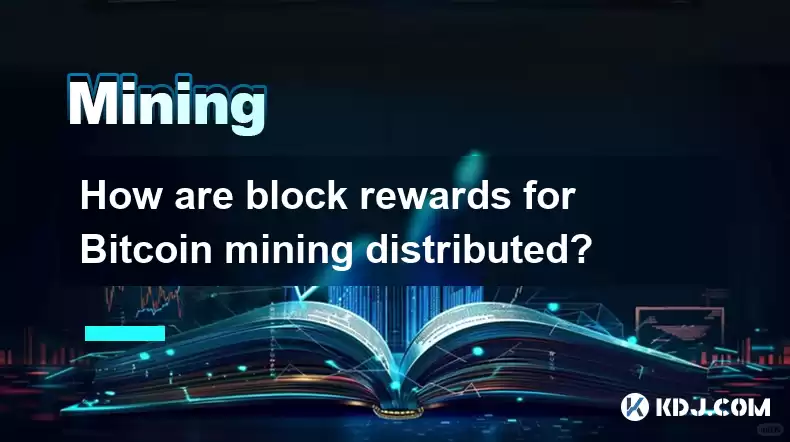
Key Points:
- Bitcoin block rewards are the primary incentive for miners to secure the network.
- The reward is halved approximately every four years, a process known as halving.
- Miners receive the block reward plus transaction fees for successfully mining a block.
- The distribution is directly to the miner's Bitcoin wallet associated with their mining operation.
- The reward amount is predetermined and encoded within the Bitcoin protocol.
How are Block Rewards for Bitcoin Mining Distributed?
Bitcoin mining is a crucial process that secures the Bitcoin network and adds new transactions to the blockchain. Miners compete to solve complex cryptographic puzzles, and the first to solve the puzzle gets to add the next block of transactions to the blockchain. The reward for this effort is the block reward, currently 6.25 BTC, plus any transaction fees included in that block. This reward is not distributed by a central authority; instead, it's directly awarded to the miner who successfully mined the block.
The process begins with miners utilizing powerful hardware to solve the cryptographic hash puzzle. This process consumes significant computational resources and electricity. Once a miner finds the solution, they broadcast the solved block to the network. Other nodes verify the solution and, if valid, add the block to the blockchain. This process ensures the integrity and security of the network.
Upon successful verification and addition of the block, the block reward, consisting of the predetermined Bitcoin amount and accumulated transaction fees, is automatically credited to the Bitcoin wallet address associated with the winning miner's mining hardware. This wallet address is specified by the miner when they submit their solution. There's no intermediary; the distribution is entirely peer-to-peer and transparent on the public blockchain.
The block reward isn't a fixed amount forever. It's designed to halve approximately every four years, a process known as the halving. This halving mechanism is a key feature of Bitcoin's monetary policy, designed to control inflation and maintain scarcity. The halving events reduce the rate at which new Bitcoins enter circulation, thus influencing the long-term value of the cryptocurrency. The halving schedule is predetermined and built into the Bitcoin protocol itself, making it an immutable part of the system.
The halving has significant implications for miners. As the block reward decreases, miners need to rely more on transaction fees to maintain profitability. This incentivizes miners to prioritize blocks with higher transaction fees, contributing to the efficiency of the network. The halving events also often impact the Bitcoin price, sometimes leading to increased volatility as the market adjusts to the reduced supply of newly minted coins.
Miners often pool their resources to increase their chances of successfully mining a block. In a mining pool, multiple miners combine their computing power, and the rewards are then distributed among the pool members proportionally to their contribution. This pooling strategy reduces the risk for individual miners and allows for more consistent earnings. The distribution within a mining pool is governed by the pool's specific rules and algorithms. It's important to note that even in a pool, the initial block reward goes to the pool's wallet, and the distribution happens internally according to the pool's rules.
The distribution mechanism is designed to be secure and transparent. Each block on the blockchain contains information about the miner who successfully solved the puzzle and the corresponding reward. This data is publicly auditable, ensuring transparency and accountability within the system. Anyone can verify the distribution of block rewards by examining the blockchain.
Frequently Asked Questions:
Q: What happens to the transaction fees?
A: Transaction fees are included in the block reward. The miner receives both the predetermined Bitcoin block reward and the sum of all transaction fees included in the block they successfully mined.
Q: How often are blocks mined?
A: The Bitcoin network aims for a block to be mined approximately every 10 minutes. This target time is adjusted automatically by the network's difficulty adjustment mechanism.
Q: What is the current block reward?
A: As of late 2023, the block reward is 6.25 BTC. This will halve again in the future, according to the predetermined halving schedule.
Q: Can I mine Bitcoin and receive the block reward myself?
A: Yes, but it requires significant investment in specialized mining hardware and electricity. The profitability of solo mining is highly dependent on the current difficulty level and Bitcoin price. Many miners choose to join a mining pool to increase their chances of earning rewards.
Q: What happens if multiple miners solve the puzzle at the same time?
A: The Bitcoin network is designed to handle this. The first miner to broadcast their valid solution to a sufficient number of nodes wins the block reward. The others' work is essentially wasted.
Q: How is the difficulty adjusted?
A: The Bitcoin network automatically adjusts its difficulty every 2016 blocks to maintain the target block time of approximately 10 minutes. If blocks are being mined faster, the difficulty increases; if slower, it decreases.
Q: Are there any other cryptocurrencies with similar block reward systems?
A: Many cryptocurrencies use a similar proof-of-work system with block rewards, although the reward amounts and halving schedules vary considerably. Some cryptocurrencies use different consensus mechanisms altogether, like Proof-of-Stake, which don't involve block rewards in the same way.
Q: Is mining Bitcoin environmentally friendly?
A: The environmental impact of Bitcoin mining is a complex and frequently debated topic. The energy consumption associated with the process is substantial, raising concerns about its carbon footprint. However, some argue that the use of renewable energy sources in mining is increasing. The overall environmental impact is still under ongoing research and discussion.
Disclaimer:info@kdj.com
The information provided is not trading advice. kdj.com does not assume any responsibility for any investments made based on the information provided in this article. Cryptocurrencies are highly volatile and it is highly recommended that you invest with caution after thorough research!
If you believe that the content used on this website infringes your copyright, please contact us immediately (info@kdj.com) and we will delete it promptly.
- Bitcoin, Fed Rate Cut, and Crypto Stocks: A New Yorker's Take
- 2025-08-05 14:50:12
- Police, Cryptocurrency, Bitcoin Windfall: Unexpected Gains and Cautionary Tales
- 2025-08-05 15:30:12
- MAGACOIN: The Next Shiba Inu ROI? A Crypto Presale Deep Dive
- 2025-08-05 15:30:12
- Bitcoin, Kiyosaki, and the August Curse: Will History Repeat?
- 2025-08-05 14:50:12
- Crypto Airdrops: Your August 2025 Guide to Free Tokens & Opportunities
- 2025-08-05 13:45:13
- Luxury Dining Reimagined: St. Regis Singapore & Marriott's Culinary Celebration
- 2025-08-05 13:45:13
Related knowledge
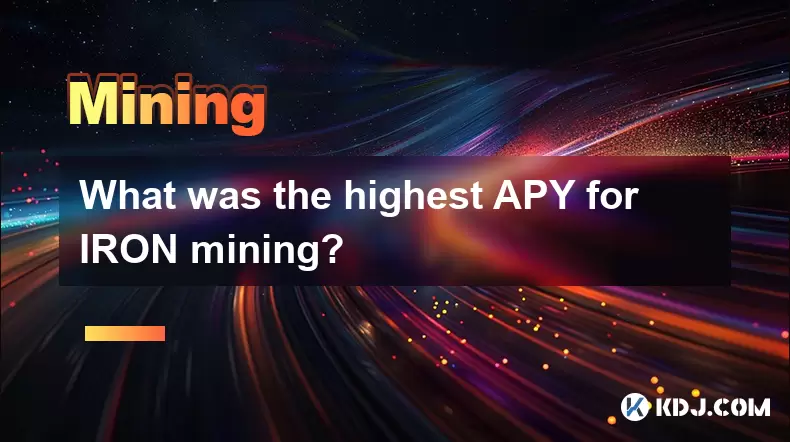
What was the highest APY for IRON mining?
Jul 23,2025 at 05:14am
Understanding IRON Token and Its Mining MechanismThe IRON token is a stablecoin that operates within the Iron Finance ecosystem, primarily on blockcha...

What is impermanent loss in IRON pools?
Jul 23,2025 at 09:00am
Understanding Impermanent Loss in the Context of IRON PoolsImpermanent loss is a phenomenon that affects liquidity providers in decentralized finance ...
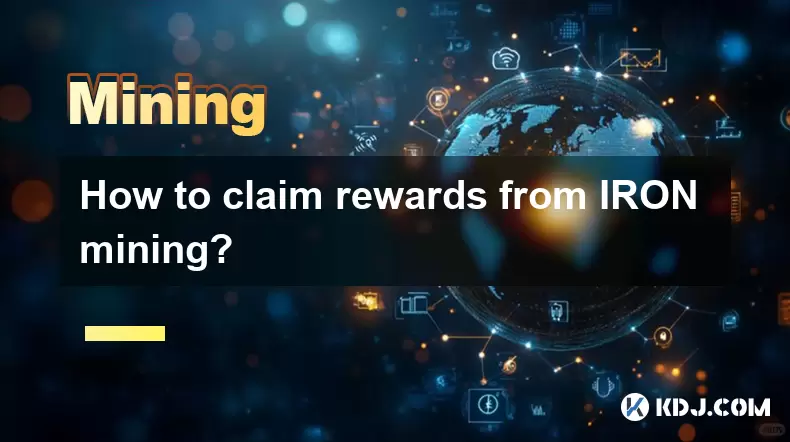
How to claim rewards from IRON mining?
Jul 23,2025 at 02:21pm
Understanding IRON Mining and Reward MechanismsIRON Finance operated as a decentralized finance (DeFi) protocol on the Polygon and Binance Smart Chain...
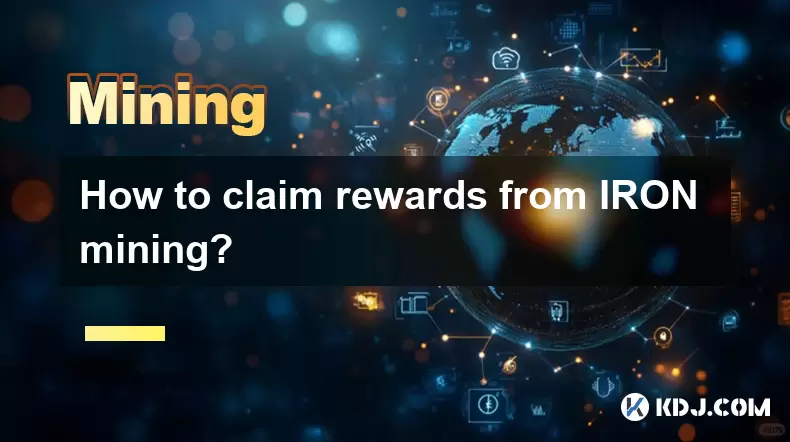
How to claim rewards from IRON mining?
Jul 29,2025 at 05:07am
Understanding IRON Mining and Reward MechanismIRON is a dual-token system designed to stabilize the value of a synthetic asset through a combination o...
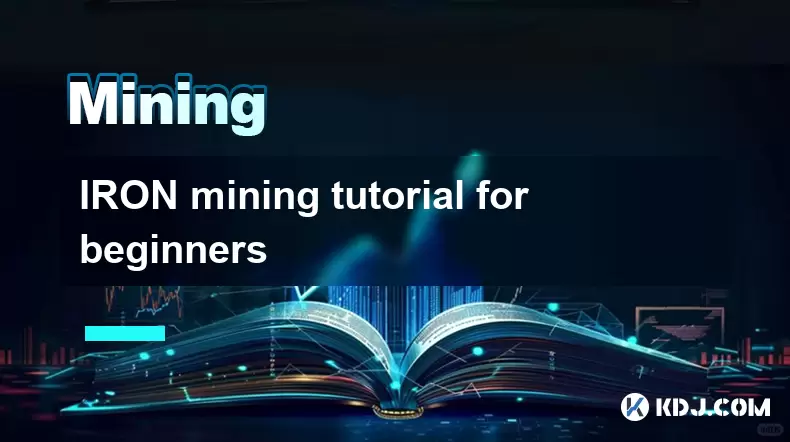
IRON mining tutorial for beginners
Jul 27,2025 at 12:01am
What Is IRON and How Does It Work in the Cryptocurrency Ecosystem?IRON is a cryptocurrency token that operates on the Binance Smart Chain (BSC) and is...
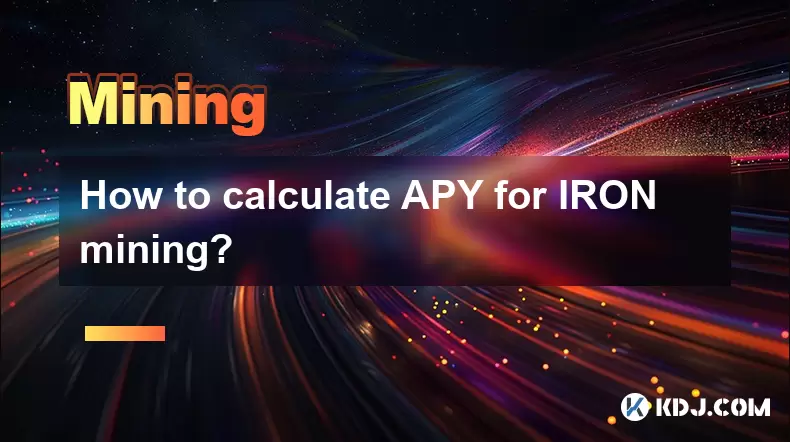
How to calculate APY for IRON mining?
Jul 28,2025 at 09:49am
Understanding APY in the Context of IRON Token MiningWhen engaging in IRON token mining within decentralized finance (DeFi) platforms, Annual Percenta...

What was the highest APY for IRON mining?
Jul 23,2025 at 05:14am
Understanding IRON Token and Its Mining MechanismThe IRON token is a stablecoin that operates within the Iron Finance ecosystem, primarily on blockcha...

What is impermanent loss in IRON pools?
Jul 23,2025 at 09:00am
Understanding Impermanent Loss in the Context of IRON PoolsImpermanent loss is a phenomenon that affects liquidity providers in decentralized finance ...

How to claim rewards from IRON mining?
Jul 23,2025 at 02:21pm
Understanding IRON Mining and Reward MechanismsIRON Finance operated as a decentralized finance (DeFi) protocol on the Polygon and Binance Smart Chain...

How to claim rewards from IRON mining?
Jul 29,2025 at 05:07am
Understanding IRON Mining and Reward MechanismIRON is a dual-token system designed to stabilize the value of a synthetic asset through a combination o...

IRON mining tutorial for beginners
Jul 27,2025 at 12:01am
What Is IRON and How Does It Work in the Cryptocurrency Ecosystem?IRON is a cryptocurrency token that operates on the Binance Smart Chain (BSC) and is...

How to calculate APY for IRON mining?
Jul 28,2025 at 09:49am
Understanding APY in the Context of IRON Token MiningWhen engaging in IRON token mining within decentralized finance (DeFi) platforms, Annual Percenta...
See all articles

























































































